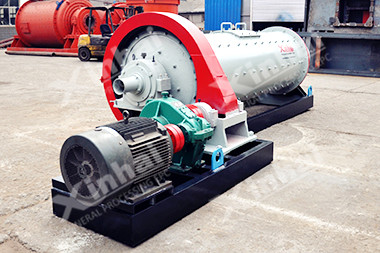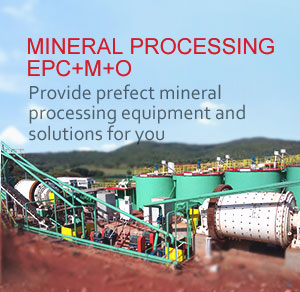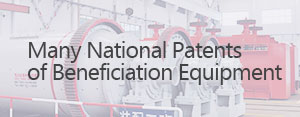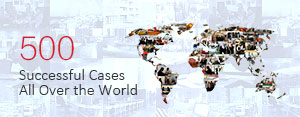- Home
- About
-
Mineral Processing EPC+M+O

Providing optimized solutions for your mine, one-stop service for mineral processing plant!
View details -
Product
- Grinding
- Classifying
Grinding & Classifying
- Flotation
- Gravity Separation Equipment
- Magnetic Equipment
- Gold Extraction Equipment
- Washing Equipment
Separating Process
- Thickening
- Dewatering Machine
Thickening & Dewatering
- Accessories
- Auxiliary Product
Consumables

Xinhai mineral processing equipment mainly include: grinding equipment, flotation equipment, dewatering equipment, magnetic separation equipment, and so on. Some of the equipment is Xinhai independent research and development, and has been awarded national patent. View details
-
Solutions
- Gold Tailings
- Tailings
Tailings

Gold CIP Production Line adsorbs gold from cyaniding pulp by active carbon including 7 steps: leaching pulp preparation, cyaniding leaching, carbon adsorption, gold loaded carbon desorption, pregnant solution electrodeposit, carbon acid regeneration, leaching pulp. View details
- Case
-
News
- Contact
Africa Copper Mining: An Industry Shaping the Continent's Destiny
2025-04-09 XinHai Views (88)Copper mining? It's no small deal in Africa. The world's appetite for this super versatile metal is on the rise, and Africa, well, it's sitting on a mountain of copper reserves. That makes it a major player in the global copper game. Here, we're going to take a deep dive into all things copper mining in Africa – from the key regions where the action's happening, to the big companies making waves, the different ways they dig out the copper, what copper's used for, the economic and social effects, what the future might hold, and the roadblocks they're facing.
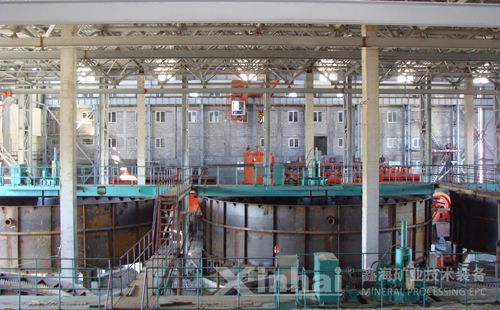
Key Copper Mining Regions in Africa
The Central African Copperbelt? Oh man, it's ginormous! This is hands down the biggest mineralized sediment-hosted copper province out there. It stretches all the way across the Katanga Province in the Democratic Republic of Congo (DRC) and Zambia's Northwestern Province.
Lately, the DRC has really come out of nowhere and become a major copper producer. In 2023, a huge portion of the new global copper reserves were discovered right there in its Katanga Basin. There are a bunch of big names in the DRC's copper game. Like, take the Kamoa - Kakula mine, which is run by Ivanhoe Mines. Then there's Mutanda Mining (MUMI), the Kamoto Copper (KCC) mine that Glencore operates, the Tenke Fungurume (CMOC) mine, the Comide and Frontier mines by ERG, the Tenke Fungurume Mine (TFM) under China Molybdenum, and the Kinsevere mine by MMG. And we can't skip over the Kolwezi Copper Mine, owned by Zijin Mining Group. That's a massive operation, no doubt.
Now, Zambia? Back in the day, it was the absolute kingpin of copper production in Africa. Man, they're just chomping at the bit to reclaim that top spot. You can tell they're super eager, 'cause they've been going all out to jack up production.
Take a look at some of these key projects. There's the expansion happening at Lumwana, which Barrick's got its hands on. And then there's Kansanshi, under the management of First Quantum.
And don't even get me started on Konkola Copper Mines and Mopani Copper Mines. They're both nestled right there in Zambia's Copperbelt Province. It's like this part of Zambia is some kind of copper mining wonderland. All these big - name companies are practically elbowing each other out of the way, trying to grab a slice of the pie.
And let's not forget KoBold Metals. They're hard at work developing the Mingomba copper project too. It's a real frenzy of activity, that's for sure.
The Kalahari Copper Belt? It stretches right across northern Botswana and then spills into Namibia.
Botswana, now that's a place with some pretty interesting mines. You've got the Khoemacau mine and the Motheo mine. It's like these mines are little hidden gems in Botswana, doing their thing in that copper - rich area. I mean, who knows what kind of cool stories and adventures are associated with getting those copper resources out of the ground at Khoemacau and Motheo. It's all part of the unique charm of this part of Africa when it comes to mining.
African Copper PLC is a company that's been busy exploring and developing copper deposits in Botswana. They've got operations at the Mowana Mine – it used to be called the Dukwe Project – and they're exploring at the Matsitama Project. The Mowana Mine is near Francistown.
Over in Namibia, copper activity has been picking up. The Kombat mine has restarted, and there's progress at the Haib copper project by Koryx Copper and the Omitiomire copper project from Omico Mining Group.
South Africa
Copper mining might have taken a bit of a dip in South Africa, but they're still in the game. The Palabora Copper Mine, owned by HBIS, is still going strong. And then there's SHiP Copper Company, a subsidiary of Copper 360, based in the Northern Cape Province. They're looking to shake things up and redefine copper mining in South Africa.
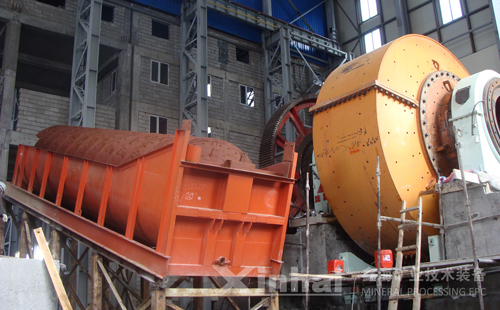
Major Copper Mining Companies in Africa
There's a whole gaggle of global mining heavyweights that have major copper operations going on in Africa. Take Freeport - McMoRan, for instance. Back in 2023, it was the top dog when it came to copper production worldwide. And then there's BHP. In 2023, it was the second - biggest copper producer, and lately, they've really got their sights set on copper. It's like they're both zeroing in on this copper - rich region of Africa to boost their business. They even made a bid for Anglo American's copper assets.
Glencore? It's a major global player. They've got big cobalt and copper mining operations in the DRC, like the Katanga and Mutanda mines. They're also a major shareholder in the Collahuasi mine in Chile and the Antamina mine in Peru. Anglo American, that British mining company with all sorts of resources, has copper assets in Chile and Peru. And BHP wanted to take them over and get their hands on those copper assets.
You know, Antofagasta's got four copper mines up and running in Chile. Then there's First Quantum Minerals, that Canadian company. They've got these copper - gold mines, and one of them is the Kansanshi mine over in Zambia.
Southern Copper? They've got some major mines in Peru and Mexico. And get this, they're now sniffing around for exploration projects in Africa.
Zijin Mining Group has that Kolwezi Copper Mine in the DRC. Ivanhoe Mines, well, they're running this massive Kamoa - Kakula copper project in the DRC. It's huge!
Over in Zambia, Konkola Copper Mines (KCM) is a big player. It's part of Vedanta Resources. And don't forget about Mopani Copper Mines, which is also there in Zambia.
Shandong Xinhai Mining is also a company that provides copper mining and dressing services.
Copper Mining Methods
When it comes to getting copper out of the ground, the approach depends on what kind of deposit it is and how deep it lies.
For those big, near - surface deposits, surface or open - pit mining is the way to go. Think of the Escondida Mine in Chile or the planned shift to open - pit mining at the Salvador mine in Chile. And in Botswana, the Mowana Mine also uses an open - pit setup. In Africa's open - cast mines, they've been making some cool progress. There are trolley - assist haul truck systems, which help move the mined material around more efficiently, and in - pit crushing, which makes processing easier right on - site.
Now, if the copper deposit is deeper down, underground mining is the technique. Take the Grasberg Block Cave Mine in Indonesia or the Konkola underground mine in Zambia. The Kamoa - Kakula Project in the DRC is another example of an underground copper mine.
Then there are these hydrometallurgical methods, heap leaching and solvent extraction/electrowinning (SX/EW). These are used to get copper from oxide ores. The Kolwezi Copper Mine in the DRC, for instance, relies on hydrometallurgy.
For sulphide ores, froth flotation is the name of the game. It's a process that physically separates the copper from the rock. And guess what? The Kolwezi Copper Mine uses this method too.
The whole beneficiation process is a bit more involved. First, there's comminution, which is just a fancy word for crushing. Then, they separate the useless stuff, the gangue. After that, they either go for hydrometallurgical liberation or froth flotation. And to get the copper to a really high purity level, they finish off with smelting and refining.
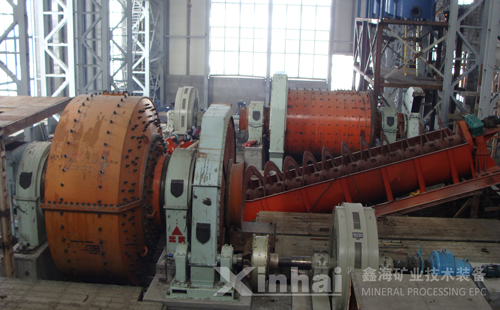
Challenges in African Copper Mining
Sure, there are all these great opportunities in African copper mining, but it's not all smooth sailing.
Take the infrastructure, for example. It's in rough shape, especially when it comes to transportation, like the railways. This makes it really hard to move all the mined copper around efficiently. And then there's energy. You need a reliable and sustainable energy supply for mining to work, right? But with climate change throwing all these curveballs, like droughts, it's hitting hydropower generation - a major energy source in places like Zambia.
The regulatory side of things is another headache. The rules are often complex or just plain uncertain, and then there's the whole corruption issue. This scares off a lot of investors. And for junior miners, things can be even tougher. The mineralogy can be a real puzzle, the grades are sometimes low, and they need all these advanced extraction technologies just to make a go of it.
How the Copper Flotation Process Enhances Ore Recovery and Profitability
Understand the copper flotation process for upgrading low-grade ore, including key steps, important reagents, and guidelines to maximize copper recovery.... [more]
Phosphate Ore Processing and Beneficiation Plant Design: A Comprehensive Engineering Approach
For economic viability and environmental control, phosphate ores must undergo beneficiation—the processing of phosphate rocks to increase phosphorus content and eliminate impurities. ... [more]
Related Article
- How the Copper Flotation Process Enhances Ore Recovery and Profitability
- Techniques for Processing Low-Grade Copper Ores
- Advanced Copper Beneficiation Methods: Thriving Amid Trade Volatility
- 1,000t/D Copper Processing EPC Project in Yunnan
- Introductions for the Ore Flotation Solutions of the Copper Lead and Zinc
- Improve Copper Production by Controlling PH in Flotation Process
Mineral Processing EPC
Solutions
CONTACT US
- Tel: 0086 15901320633
- Fax: 0086 10 59621207
- Email: mhxu@xinhaimining.net
© 2017 Shandong Xinhai Mining Technology & Equipment Inc. Technical Support: Beijing Xinhulian Technology Co., Ltd.
Factory Address: No. 188, Xinhai Street, Fushan high-tech industrial development district, Yantai, Shandong, China


